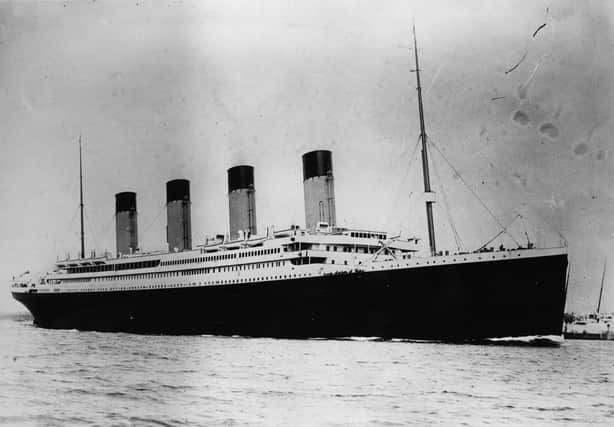Titanic hero’s story retold in Glasgow museum he made his home


The heroic tale of a young wireless operator, whose actions on board the Titanic helped save hundreds of lives, is to be told in the Glasgow museum where he went on to live and work, when it reopens later this month following a £2 million restoration.
Harold Bride, a Marconi wireless operator, was responsible for one of the world’s first SOS signals in the early hours of 15 April 1912, after the "unsinkable" liner struck an iceberg with the loss of more than 1500 passengers and crew.
Advertisement
Hide AdAdvertisement
Hide AdJust 22 years old when the tragedy occurred, Bride later moved to Glasgow in 1922 where he chose to live out his life in obscurity.
Bride worked as a live-in caretaker and manager at historic Provan Hall Museum for several years until his death in 1956 and his story will now be told as part of the history of people who lived in the building.
Provan Hall has been closed since 2017 but a £2 million restoration project has transformed it into a state-of-the-art interactive visitors’ centre and community facility, set to reopen to the public on September 11.
Alisa Ulanova, of the Provan Hall Museum, who has documented Bride's life, said: "At 11.40pm, the Titanic hit the iceberg... Shortly after midnight the captain came in and told them to send 'a regulation international call for help, just that'.
"After about five minutes the captain came back asking Bride to send a distress call. Bride said to Phillips, 'Send SOS, it's the new call, it may be your last chance to send it'. They all laughed. Phillips, still laughing, changed the signal."
Ms Ulanova told how Bride was among survivors picked up by the RMS Carpathia. She added: "Harold helped Carpathia's exhausted operator send lists of survivors and messages of grief from Titanic passengers to their loved ones ashore. When they arrived, about 40,000 people stood on the wharves waiting for them.
"One of the police officers recognised Guglielmo Marconi, inventor of the wireless telegraph system, in the crowd. If it hadn’t been for Marconi’s invention, no one would have survived. Seven hundred people had been saved thanks to the wireless telegraph."
Bride married Lucy Downie, a teacher, in 1920 and the couple moved to Stranraer, where they had three children, Lucy, John, and Jeanette. To escape his Titanic fame, modest Bride became a traveling salesman for a pharmaceutical company, before moving the family first to Scone, near Perth, and then to Glasgow, where he lived until his death, aged 66, in 1956.Provan Hall dates back to the 15th century and is one of Glasgow’s oldest buildings. Originally a hunting lodge for the city's bishops, it is now owned by the National Trust For Scotland (NTS) and leased to Glasgow City Council.
Advertisement
Hide AdAdvertisement
Hide AdIn the 1950s, the NTS employed live-in caretakers who would carry out maintenance and provide guided tours for visitors.
Ms Ulanova said: "Harold used to give tours of the building. If someone couldn't pay the entry price, he would let them pay half."
Comments
Want to join the conversation? Please or to comment on this article.